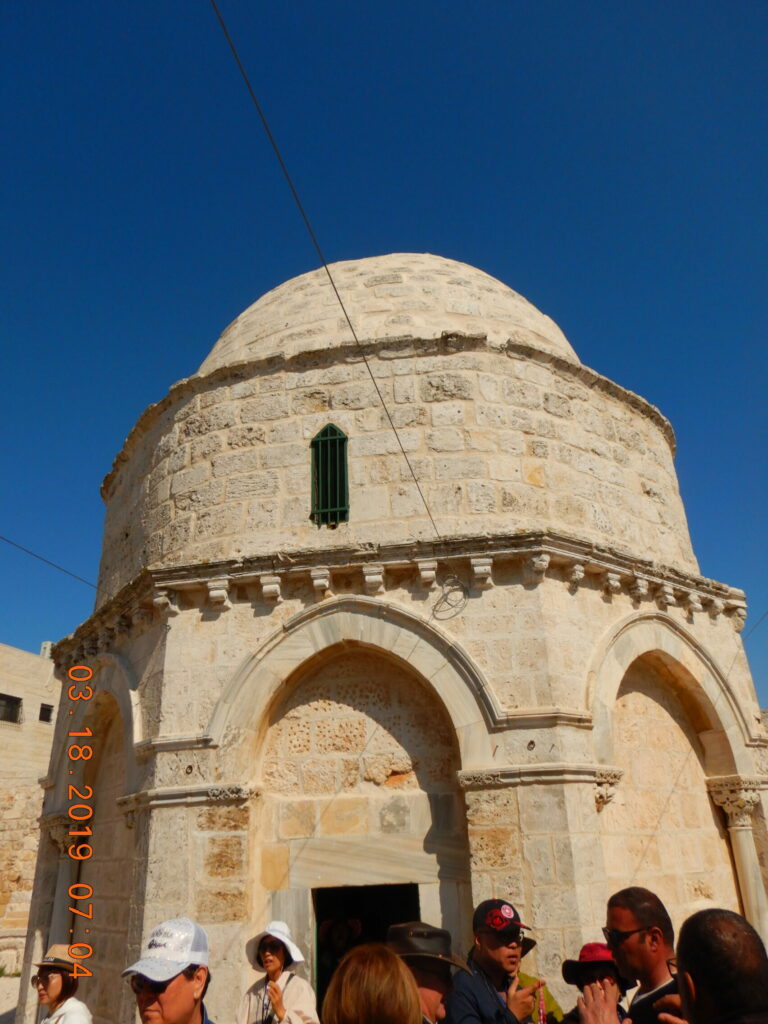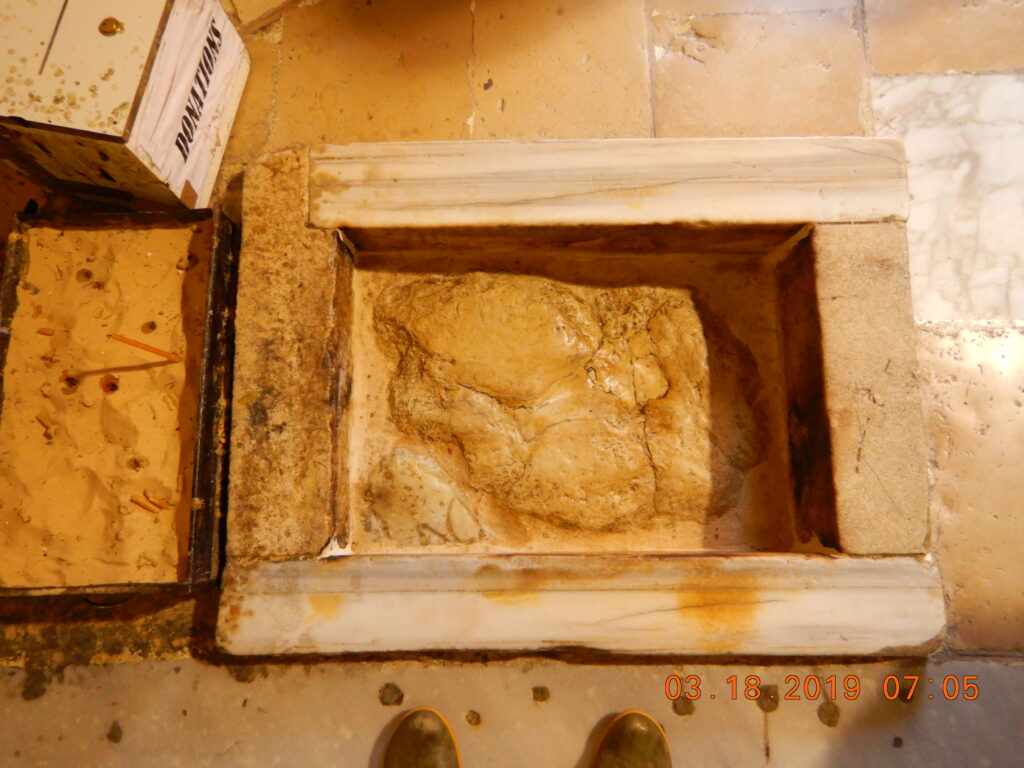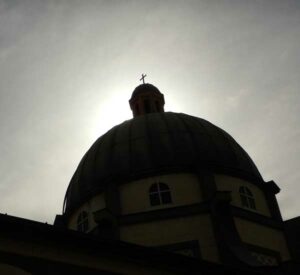On the eight day we visited the church of the Pater Noster, which is Latin for “Our Father.” This site is associated with the teaching of the disciples by Jesus and specifically, the teaching of the Lord’s Prayer.
This was also the day we visited the Church of the Agony, and the rock of the Ascension on Mount Olive, which is the specific site where it is thought Jesus ascended to heaven in the presence of his disciples and Mary.

Within the Chapel of the Ascension is a portion of the rock to which is ascribed the value of being the specific site in the village of Bethany on Mount Olive where it occurred forty days after the resurrection, as described in the Acts of the Apostles, chapter one.
“Then they gathered around him and asked him, “Lord, are you at this time going to restore the kingdom to Israel?” 7 He said to them: “It is not for you to know the times or dates the Father has set by his own authority. 8 But you will receive power when the Holy Spirit comes on you; and you will be my witnesses in Jerusalem, and in all Judea and Samaria, and to the ends of the earth.” 9After he said this, he was taken up before their very eyes, and a cloud hid him from their sight. 10 They were looking intently up into the sky as he was going, when suddenly two men dressed in white stood beside them. 11 “Men of Galilee,” they said, “why do you stand here looking into the sky? This same Jesus, who has been taken from you into heaven, will come back in the same way you have seen him go into heaven.” 12 Then the apostles returned to Jerusalem from the hill called the Mount of Olives, a Sabbath day’s walk from the city. “

The original chapel was built as an open rotunda without a roof and open to the sky in about 350 AD, then destroyed by the Persians in 680, along with nearly all other Christian churches in a fourteen-year period of time. Legend has it that Saint Helena identified two specific spots on the Mount of Olives associated with Jesus’s life. The site of the Ascension, and the grotto associated with the teaching of the Lord’s Prayer, and on her return to Rome (she was the mother of Constatine I) ordered the construction of two sanctuaries at these sites.
The Chapel was rebuilt in the seventh century, again with an open roof. It was destroyed, then rebuilt a second time by the Crusaders in the twelfth century, but then destroyed by Salah ad-Din down to a 12×12 meter octagon surrounding a 3×3 meter shrine. After the fall of Jerusalem in 1187, it was abandoned by the Christians and the chapel was converted to a mosque, and Salah ad-Din walled up the open spaces between the columns and slapped a dome on the top. The rock inside is said to contain the right footprint of Jesus.
I didn’t know that when I saw the rock and so I didn’t look for a foot-print, and do not specifically see one in the image I captured. We saw so much that day and every day. I was impressed by how close everything was, but that should not be surprising as this was 2000 years ago and the primary means of transportation was walking. So, in considering the events of the Holy week: On Holy Thursday the Last Supper occurred in the upper room, which we visited and held our daily mass in. After supper, the disciples and Jesus walked to Gethsemane where Jesus experienced the Agony after which he was betrayed by Judas, and he was taken to a holding cell to await his appearance in the court of Pontius Pilate the next day. This place is now marked by the Church of St. Peter in Gallicantu, which is Latin for “cock’s-crow,” and is believed to be the location of the High Priest Caiaphas’ place on the eastern slope of Mount Zion, just outside the Old (walled) city of Jerusalem, less than an hour walk from Gethsemane.
I may will do a specific post on that place, but for now, will end this post with The Church of Pater Noster.
